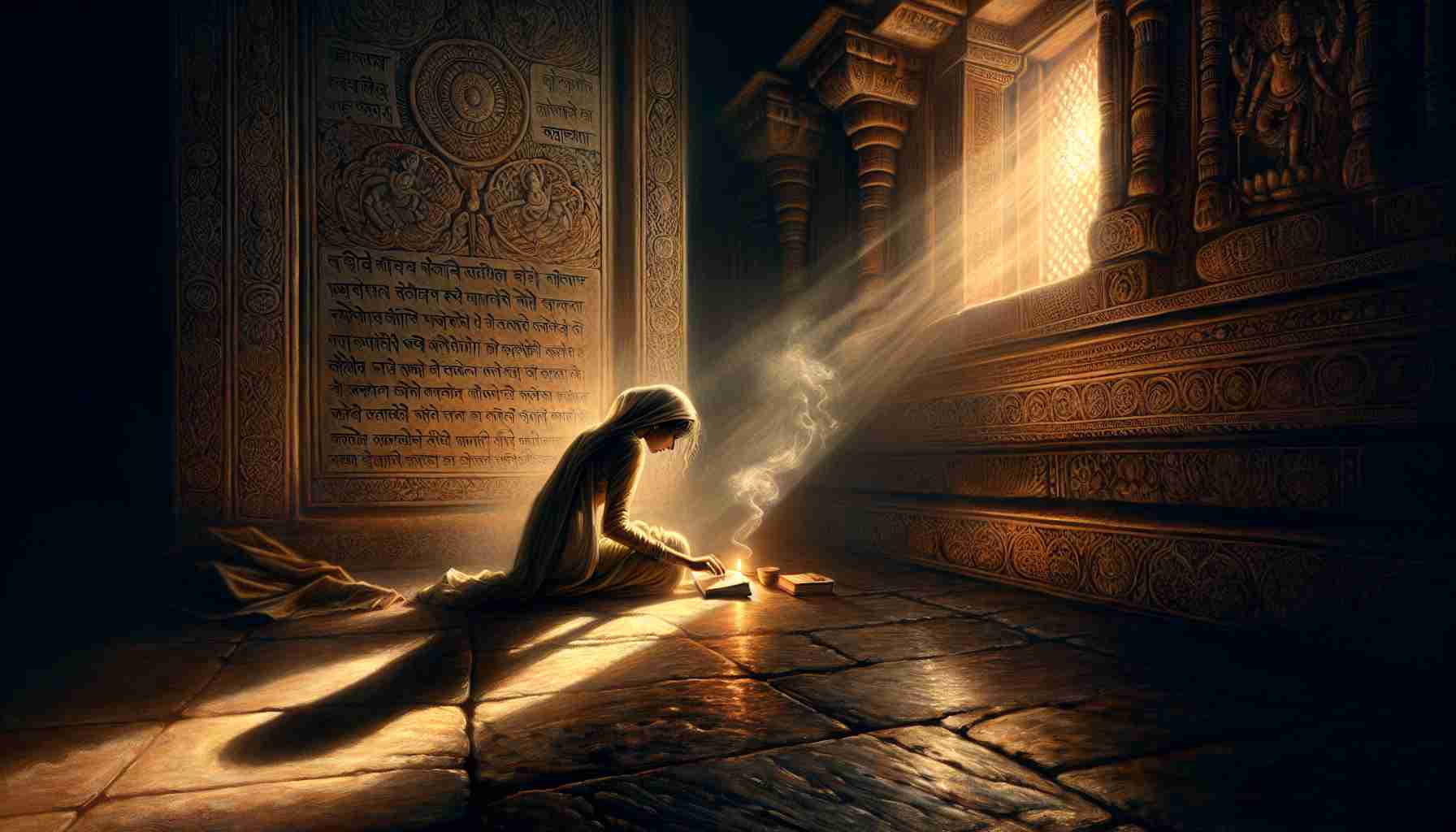

I was nine when I first believed I was nothing special.
My name is Meera. I grew up in a small town near Rameshwaram, where the sea touched the land like a mother cradling her sleeping child. My parents were temple cleaners — quiet, faithful people who rose before the sun to sweep the sanctum floors of the ancient Shiva temple nearby. I would tag along, barefoot, eyes wide, lighting oil lamps while the bells rang for mangala aarti — the morning prayer.
At school, though, it was different. I was darker than the other girls. My uniform was faded at the edges. I didn’t speak boldly or raise my hand with answers. “Temple girl,” they’d call me, snickering as I walked past. Slowly, I began to believe them — that I was small, forgettable, not enough.
I stopped singing at home. Stopped drawing Ganesha's elephant head like I used to. Even when sitting by the ocean, my favorite place, I felt hollow — like a coin lost in deep water.
Years passed. One monsoon day, when I was sixteen, I found myself alone in the temple after cleaning. The rains had chased the usual crowd away. Water slipped through cracks in the roof, pooling near Lord Shiva’s shrine. I sat on the cool floor, hugging my knees.
I don’t know why, but I whispered, “Am I worthless, Mahadev?” — addressing Shiva gently, like I used to as a child.
The silence around me was heavy, but not empty. My eyes landed on a line carved faintly into the temple wall beside the shrine. I had passed it a hundred times, maybe more, but never noticed it until then:
"Atma is never born nor does it die. It is eternal, beyond destruction." (Bhagavad Gita 2.20)
I said it aloud.
The Sanskrit echoed softly in that quiet temple. A warmth spread in my chest — not like a thunderclap, but like when clouds part just a little and light falls in.
I remembered something my father used to say while lighting incense: “The divine lives inside us, Meera. That is why we bow to each other — we honor what cannot be seen.” That teaching had come from the Chandogya Upanishad: “Tat Tvam Asi” — You are that.
I was never without worth. It was like the flame behind the smoke — always there, only hidden.
That night, I drew again. A simple sketch of Shiva, dancing under a starlit sky. My strokes were shaky, but something inside me felt steady.
Years later, I became an art teacher, not far from that same temple. I tell my students that divinity is not in gold or fame — it's in how gently you hold a brush, how patiently you care for one another.
And sometimes, when I’m alone, I return to that old temple. I sit by the shrine. I light a small diya and whisper what I now know:
Sacred worth is never lost.
Only waiting to be seen.
I was nine when I first believed I was nothing special.
My name is Meera. I grew up in a small town near Rameshwaram, where the sea touched the land like a mother cradling her sleeping child. My parents were temple cleaners — quiet, faithful people who rose before the sun to sweep the sanctum floors of the ancient Shiva temple nearby. I would tag along, barefoot, eyes wide, lighting oil lamps while the bells rang for mangala aarti — the morning prayer.
At school, though, it was different. I was darker than the other girls. My uniform was faded at the edges. I didn’t speak boldly or raise my hand with answers. “Temple girl,” they’d call me, snickering as I walked past. Slowly, I began to believe them — that I was small, forgettable, not enough.
I stopped singing at home. Stopped drawing Ganesha's elephant head like I used to. Even when sitting by the ocean, my favorite place, I felt hollow — like a coin lost in deep water.
Years passed. One monsoon day, when I was sixteen, I found myself alone in the temple after cleaning. The rains had chased the usual crowd away. Water slipped through cracks in the roof, pooling near Lord Shiva’s shrine. I sat on the cool floor, hugging my knees.
I don’t know why, but I whispered, “Am I worthless, Mahadev?” — addressing Shiva gently, like I used to as a child.
The silence around me was heavy, but not empty. My eyes landed on a line carved faintly into the temple wall beside the shrine. I had passed it a hundred times, maybe more, but never noticed it until then:
"Atma is never born nor does it die. It is eternal, beyond destruction." (Bhagavad Gita 2.20)
I said it aloud.
The Sanskrit echoed softly in that quiet temple. A warmth spread in my chest — not like a thunderclap, but like when clouds part just a little and light falls in.
I remembered something my father used to say while lighting incense: “The divine lives inside us, Meera. That is why we bow to each other — we honor what cannot be seen.” That teaching had come from the Chandogya Upanishad: “Tat Tvam Asi” — You are that.
I was never without worth. It was like the flame behind the smoke — always there, only hidden.
That night, I drew again. A simple sketch of Shiva, dancing under a starlit sky. My strokes were shaky, but something inside me felt steady.
Years later, I became an art teacher, not far from that same temple. I tell my students that divinity is not in gold or fame — it's in how gently you hold a brush, how patiently you care for one another.
And sometimes, when I’m alone, I return to that old temple. I sit by the shrine. I light a small diya and whisper what I now know:
Sacred worth is never lost.
Only waiting to be seen.